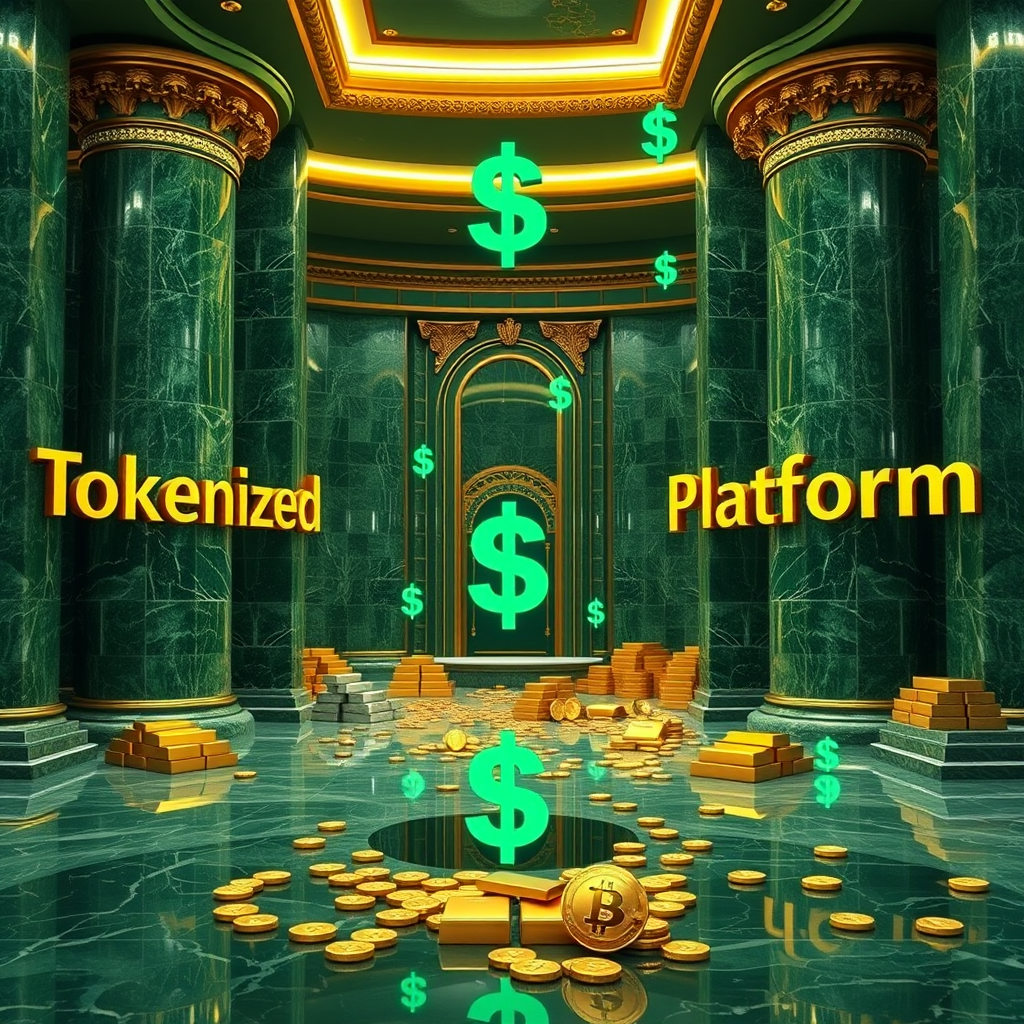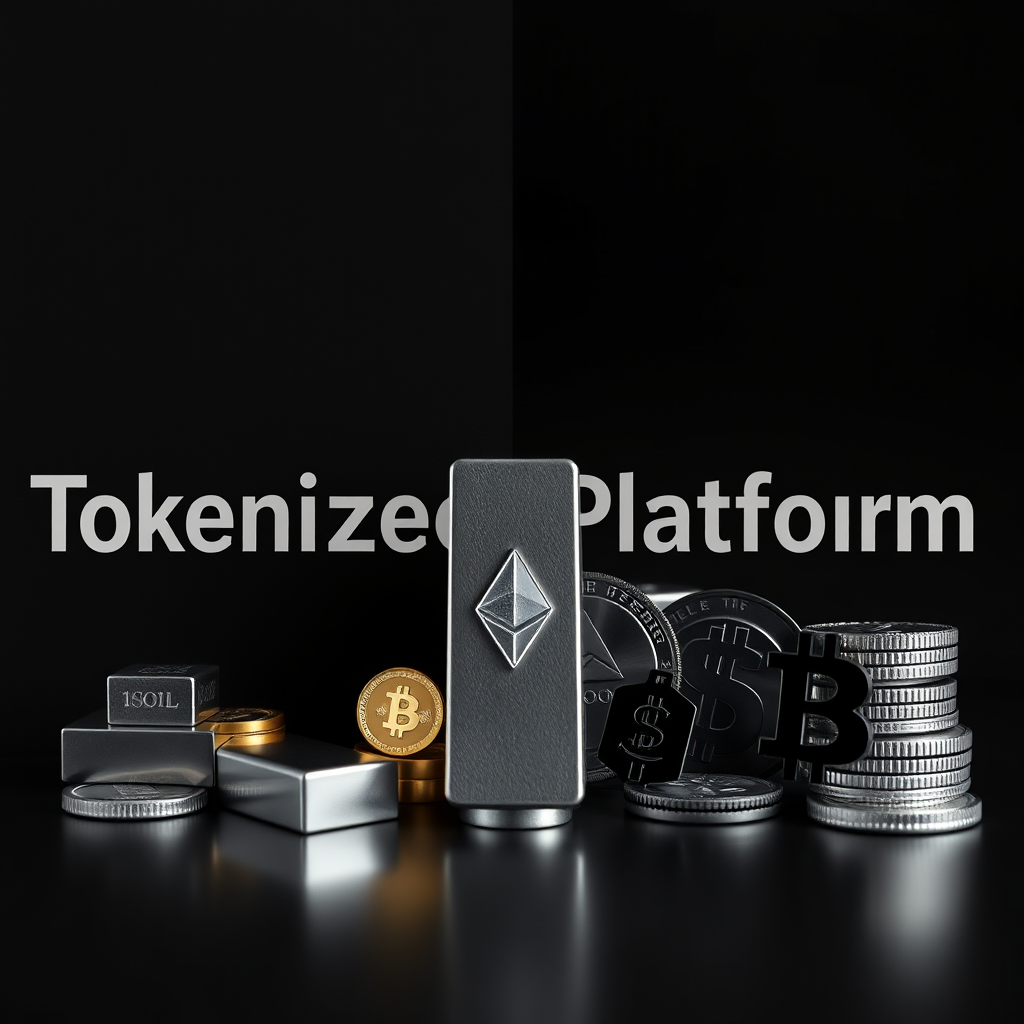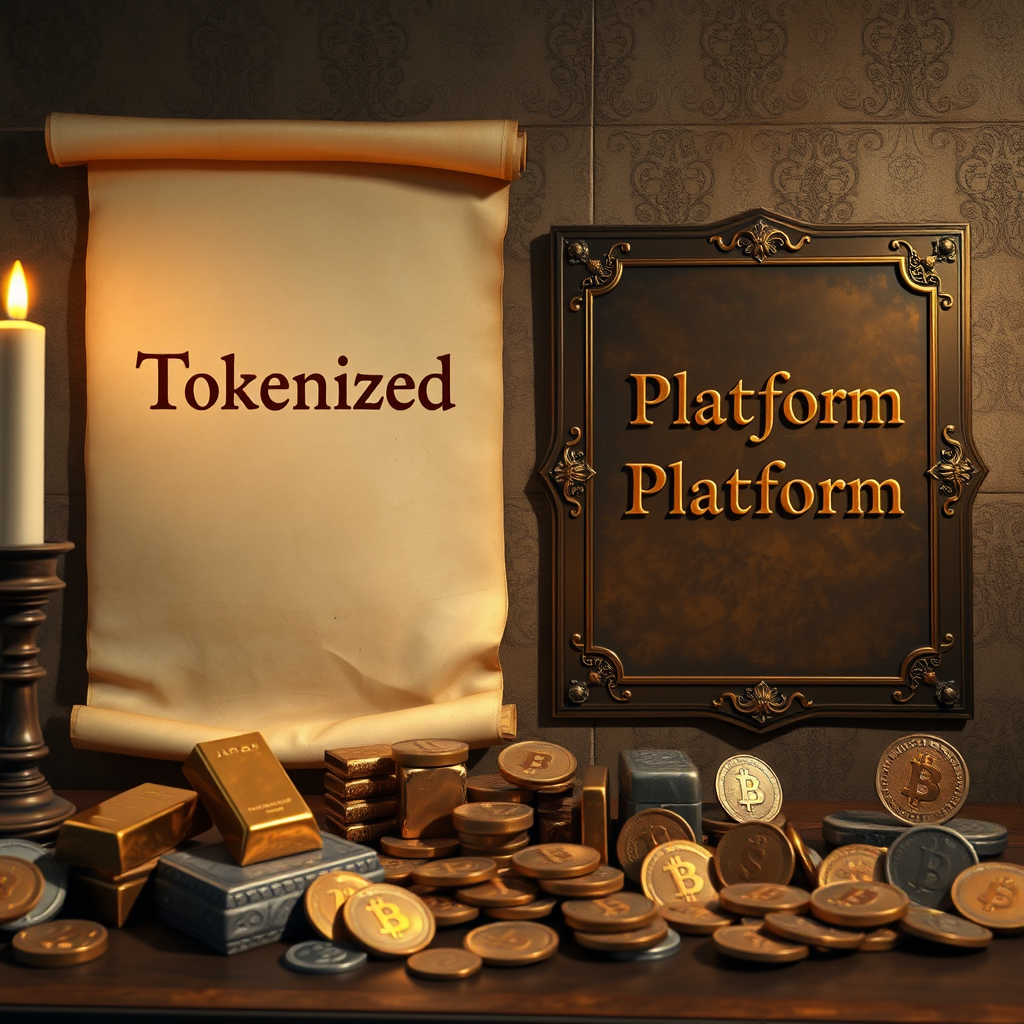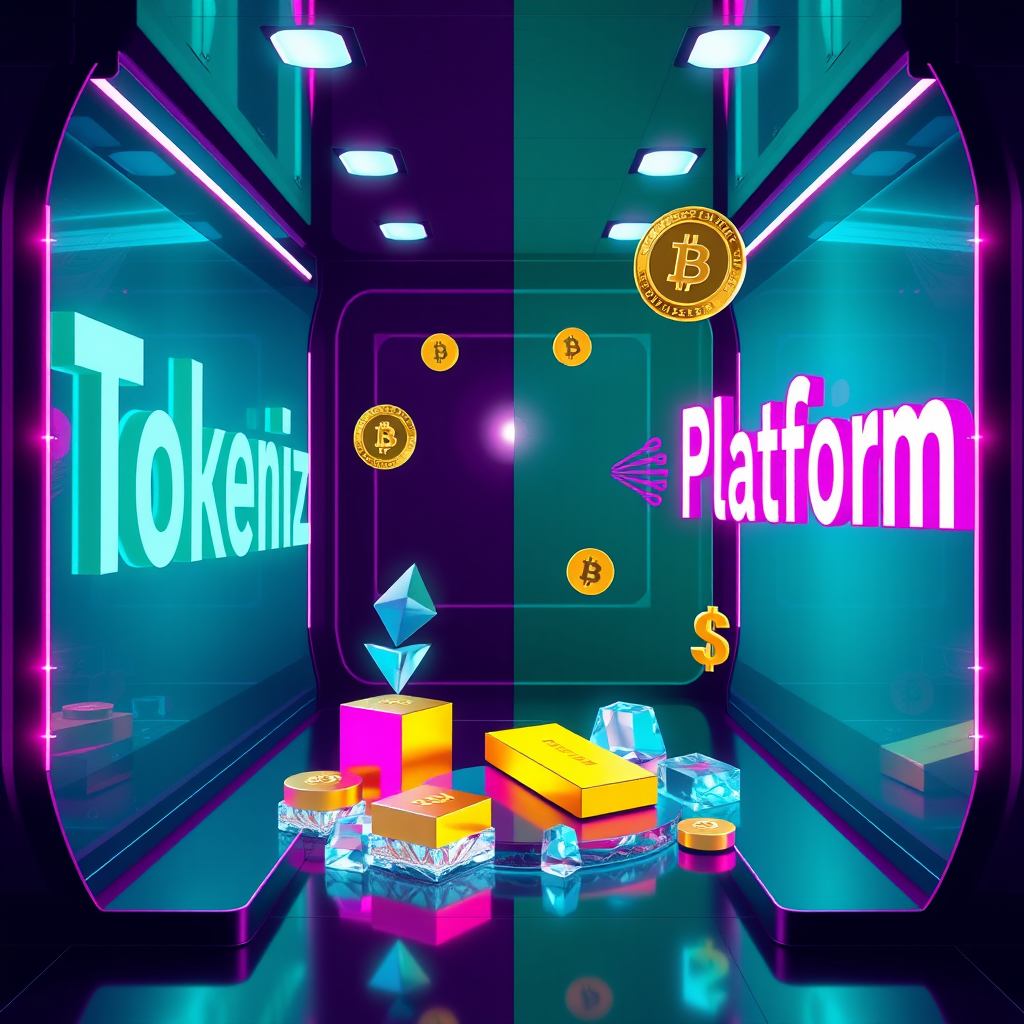Tokenization on Ethereum is a cornerstone of the blockchain ecosystem, enabling diverse applications from decentralized finance (DeFi) to digital asset management. At its core, tokenization transforms physical or digital assets into digital tokens that can be traded or managed within the Ethereum network. These tokens can represent anything from real estate shares to artwork, and even other cryptocurrencies, bringing liquidity to traditionally illiquid markets.
A tokenizedplatform leverages smart contracts to facilitate the creation, issuance, and management of these tokens, ensuring a transparent and secure transaction environment. Ethereum’s decentralized architecture benefits token creators and holders by providing robust security and flexibility in handling digital assets.
The development of a tokenizedplatform on Ethereum involves understanding different token standards which dictate how tokens are issued and managed on the network. By adopting standardized protocols, Ethereum enhances the interoperability and integration of tokens across diverse applications, fueling innovation in the DeFi space.
For those interested in entering the realm of tokenization on Ethereum, familiarizing oneself with the inner workings of this process is essential. It requires not only a grasp of Ethereum’s technical infrastructure but also an understanding of how tokenization can unlock new business models and investment opportunities worldwide.
choosing the right token standard

When developing a tokenizedplatform on Ethereum, selecting the appropriate token standard is crucial for aligning with your project’s goals and ensuring compatibility across the network. Ethereum provides various token standards, each tailored for specific use cases and functionalities. The most widely used standard is ERC-20, which supports fungible tokens, making it ideal for applications requiring uniform token consistency, such as cryptocurrencies and utility tokens. ERC-20 tokens benefit from established tools and a large ecosystem, facilitating their integration into existing DeFi protocols and exchanges.
Alternatively, if your project involves non-fungible tokens (NFTs), ERC-721 is the standard of choice. Unlike ERC-20, ERC-721 tokens are unique and indivisible, perfect for digital art, collectibles, or any assets requiring distinct identification. The growing popularity of NFTs has led to a burgeoning market within Ethereum, and adopting ERC-721 ensures your tokens can leverage this thriving ecosystem.
For developers looking to combine the benefits of both fungible and non-fungible tokens, ERC-1155 offers a multi-token standard. This allows a single smart contract to manage multiple token types, increasing efficiency and reducing deployment costs. ERC-1155 is particularly useful in gaming or content platforms where a variety of token types might coexist, from in-game currencies to unique digital items.
Beyond these standard options, it’s critical to assess the scalability, security, and compliance aspects associated with your chosen token standard. Your decision will influence transaction speeds, gas costs, and the overall user experience on your tokenizedplatform. By carefully evaluating your needs and the technical specifications of each standard, you ensure that your tokens align with the objectives and constraints of your project.
implementing smart contracts securely
Developing secure smart contracts is fundamental to the success and reliability of any tokenized platform on Ethereum. Smart contracts are self-executing contracts with terms directly written into code, ensuring that transactions and agreements are automatically enforced without the need for intermediaries. However, their immutable nature makes security paramount, as any coding errors can lead to irreparable issues and potential asset loss.
A crucial step in implementing smart contracts securely involves extensive code audits. Conduct thorough reviews and testing procedures to identify and rectify any vulnerabilities or bugs before deploying the contract on the Ethereum mainnet. Automated testing tools can simulate numerous scenarios to scrutinize contract behavior, while formal verification techniques can mathematically prove the correctness of the contract, adding another layer of security assurance.
Another critical aspect of smart contract security is following development best practices. Utilize established libraries and frameworks, such as OpenZeppelin, which offer tested and community-reviewed code templates, reducing the risk of errors. Writing modular, well-documented code enhances the understanding and maintainability of smart contracts, facilitating easier and safer updates.
Additionally, pay attention to gas optimization to manage Ethereum’s transaction fees effectively. Optimize code to minimize unnecessary computations and storage usage, lowering gas costs while ensuring swift execution. Well-optimized smart contracts not only save resources but also improve the platform’s user experience by providing faster and more cost-effective transactions.
Lastly, incorporate a multi-sig wallet for administering critical functions within your smart contracts. By requiring multiple approvals before executing sensitive operations, you add an extra security layer, protecting against unilateral actions by any single party. Regularly updating security practices and staying informed about the latest threats and countermeasures in the blockchain space also contributes significantly to maintaining a secure tokenized platform.
ensuring platform scalability

Ensuring a tokenizedplatform on Ethereum is scalable involves addressing several key aspects critical for handling increased user demand and transaction volume without compromising performance. One of the primary steps in achieving scalability is optimizing the underlying infrastructure to facilitate efficient data processing. Utilizing layer 2 solutions, such as rollups or state channels, can significantly alleviate the load on the Ethereum mainnet by batching multiple transactions into a single one, thus reducing computational demand.
Beyond layer 2 integrations, consider utilizing sharding, a future Ethereum upgrade, which promises enhanced scalability by dividing the blockchain into smaller partitions or “shards,” enabling parallel processing of transactions. By distributing network load in this manner, sharding aims to increase throughput and enable the Ethereum network to process thousands of transactions per second, making it suitable for a growing tokenizedplatform.
The choice of consensus mechanism also plays a pivotal role in scalability. The transition of Ethereum from Proof of Work (PoW) to Proof of Stake (PoS) through Ethereum 2.0, for instance, is designed to enhance the network’s efficiency and scalability. PoS reduces computational waste and supports faster transaction validation, accommodating more users on the platform effectively.
Another key consideration is optimizing smart contract architecture to support scalability. Implement gas-efficient design patterns to ensure that transactions are processed swiftly, reducing the risk of congestion and higher gas fees during peak usage. Using batch processing for transactions within smart contracts can also minimize resource consumption, streamlining operations by handling multiple transactions simultaneously.
Ensuring interoperability and compatibility with other blockchains and DeFi protocols can further bolster scalability. Cross-chain collaborations, such as bridges, enable assets and data to flow seamlessly between blockchains, fostering interconnected ecosystems and dispersing traffic efficiently across multiple platforms. This approach not only boosts scalability but also enriches the functionality and reach of your tokenizedplatform.
Regular monitoring and analytics are indispensable for maintaining scalability. Employ robust tracking tools to gauge platform performance, user activity, and transaction bottlenecks. By analyzing this data, developers can make informed decisions on scaling strategies and infrastructure enhancements, aligning with the growing demands of their user base while ensuring the platform remains robust, responsive, and capable of sustaining long-term growth on the Ethereum network.
compliance and regulatory considerations

Compliance with regulatory frameworks is essential when creating a tokenizedplatform on Ethereum. Navigating the complex landscape of regulations and ensuring adherence to legal standards not only protects your platform but also fosters trust among users and investors. Regulatory environments can vary significantly across jurisdictions, so it’s crucial to conduct thorough research and consult legal professionals to understand how these rules apply to your platform.
A critical component of compliance involves anti-money laundering (AML) and know your customer (KYC) protocols. Implementing robust KYC processes ensures that users are properly verified, reducing the risk of illicit activities on your platform. This requires collecting and securely storing user data in compliance with privacy laws such as GDPR, thereby protecting user information while maintaining regulatory compliance.
Additionally, the classification of tokens—whether they are considered securities, commodities, or utilities—greatly influences compliance requirements. Engaging with legal experts to determine the regulatory implications of your token classification is paramount. For instance, if tokens are deemed securities, they may require registration with financial authorities such as the SEC in the United States, or their equivalent in other regions. Understanding these nuances helps in structuring your token offering to meet regulatory demands effectively.
Maintaining transparent communication with users about the rules and policies governing your tokenizedplatform is also vital. Clear disclosures regarding the risks associated with token ownership and transactions should be included in user agreements to ensure that users are informed and compliant with relevant rules.
Staying informed about regulatory changes is another key strategy for maintaining compliance. The regulatory landscape is dynamic, and keeping abreast of new legislation or amendments to existing laws enables you to adapt quickly and avoid potential legal pitfalls. Establishing a compliance team or working with legal consultants can help monitor these developments and provide timely advice on necessary adjustments to your platform and its operations.
By prioritizing regulatory compliance from the outset, a tokenizedplatform on Ethereum can mitigate legal risks, build credibility, and position itself as a trustworthy entity in the DeFi ecosystem. This proactive approach not only safeguards the platform’s operations but also enhances its appeal to institutional investors, who often require stringent adherence to regulatory standards before committing resources to blockchain projects.






